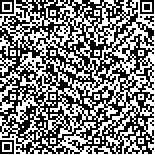| Related citation: | GE Xin,LIU Gong liang,WANG Hong dan,WANG Yong,ZHANG Nai tong.Downlink call admission control with power allocation and rate scheduling for IDMA based multi beam satellite systems[J].Journal of Harbin Institute Of Technology(New Series),2012,19(2):85-90.DOI:10.11916/j.issn.1005-9113.2012.02.015. |
|
| Author Name | Affiliation | | GE Xin | School of Electronics and Information Engineering, Harbin Institute of Technology, Harbin 150001, China
| | LIU Gong liang | School of Information Science and Engineering, Harbin Institute of Technology, Shandong Weihai 264209 | | WANG Hong dan | School of Information Science and Engineering, Harbin Institute of Technology, Shandong Weihai 264209 | | WANG Yong | School of Electronics and Information Engineering, Harbin Institute of Technology, Harbin 150001, China
| | ZHANG Nai tong | School of Electronics and Information Engineering, Harbin Institute of Technology, Harbin 150001, China
|
|
| Abstract: |
| Considering the advantage of interleave division multiple access (IDMA) technique and the technical bottlenecks in the existing satellite systems, IDMA is introduced into satellite communication networks. To further validate the IDMA into satellite systems, an effective call admission control (CAC) is proposed to maximize the resource utilization. After establishing the multi beam satellite system model based on variable spreading gain (VSG) IDMA, the power allocation scheme based on SINR evolution technique and transmission rate adaptation for nonreal time interactive traffic are designed as integrated parts of the CAC, working together to improve the system performance in terms of power efficiency and throughput. Further, the analysis and simulation results show that IDMA under the proposed scheme can provide better QoS, in terms of the blocking/dropping probability, outage probability as well as delay performance. |
| Key words: IDMA call admission control power allocation rate adaptation SINR evolution multi beam satellite system |
| DOI:10.11916/j.issn.1005-9113.2012.02.015 |
| Clc Number:TN927+.23 |
| Fund: |






